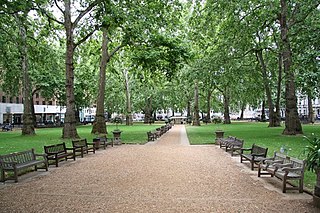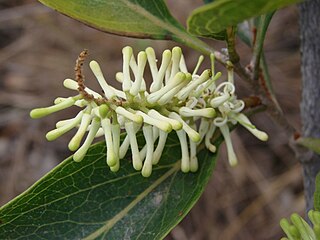Uses
- Lacewood
- Lacewood Dulcimer
Lacewood is a common name for the wood produced from a number of different trees, with mostly a striking appearance of their "lace-wood", which gets its name from the lace like pattern: These include:
Sycamore is a name which has been applied to several types of trees, but with somewhat similar leaf forms. The name derives from the Ancient Greek σῡκόμορος meaning 'fig-mulberry'.

Lace is a delicate fabric made of yarn or thread in an open weblike pattern, made by machine or by hand. Generally, lace is split into two main categories, needlelace and bobbin lace, although there are other types of lace, such as knitted or crocheted lace. Other laces such as these are considered as a category of their specific craft. Knitted lace, therefore, is an example of knitting. This article considers both needle lace and bobbin lace.

Mesquite is a common name for some plants in the genus Prosopis, which contains over 40 species of small leguminous trees. They are native to dry areas in the Americas. They have extremely long roots to seek water from very far under ground. As a legume, mesquites are one of the few sources of fixed nitrogen in the desert habitat. The trees bloom from spring to summer. They often produce fruits known as "pods". Prosopis spp. are able to grow up to 8 metres (26 ft) tall, depending on site and climate. They are deciduous and depending on location and rainfall have either deep or shallow roots. Prosopis is considered long-lived because of the low mortality rate after the dicotyledonous stage and juveniles are also able to survive in conditions with low light and drought. The Cahuilla indigenous people of western North America were known to eat the seeds of mesquite.

Platanus × hispanica, the London plane or hybrid plane, is a tree in the genus Platanus. It is often known by the synonym Platanus × acerifolia, a later name. It is a hybrid of Platanus orientalis and Platanus occidentalis.

Platanus occidentalis, also known as American sycamore, American planetree, western plane, occidental plane, buttonwood, and water beech, is a species of Platanus native to the eastern and central United States, the mountains of northeastern Mexico, extreme southern Ontario, and extreme southern Quebec. It is usually called sycamore in North America, a name which can refer to other types of trees in other parts of the world; in the United Kingdom, for example, the name syacamore typically refers to Acer pseudoplatanus. The American sycamore is a long-lived species, typically surviving at least 200 years and likely as long as 500–600 years.
Ironwood is a common name for many woods or plants that have a reputation for hardness, or specifically a wood density that is denser than water, although usage of the name ironwood in English may or may not indicate a tree that yields such heavy wood.
Ribbonwood is a common name for several plants. They are like the lacebarks in having an inner layer of bark made up many lace-like layers, which can be torn into ribbon-like strips, and may refer to:

Rosewood is any of a number of richly hued hardwoods, often brownish with darker veining, but found in other colours. It is hard, tough, strong, and dense. True rosewoods come from trees of the genus Dalbergia, but other woods are often called rosewood. Rosewood takes a high polish and is used for luxury furniture-making, flooring, musical instruments, and turnery.
Beefwood is the name given to a number of Australian trees which have timber with a red colouration resembling raw beef as follows:

Lagetta lagetto is a species of tree native to several Caribbean islands. It is called the lacebark or gauze tree because the inner bark is structured as a fine netting that has been used for centuries to make clothing as well as utilitarian objects like rope.

The Grevilleoideae are a subfamily of the plant family Proteaceae. Mainly restricted to the Southern Hemisphere, it contains around 46 genera and about 950 species. Genera include Banksia, Grevillea, and Macadamia.
Snakewood is a common name of several different plants:
Lacebark is a common name for several plants, lacebark trees and may refer to:

Roupala is a Neotropical genus of woody shrubs and trees in the plant family Proteaceae. Its 34 species are generally found in forests from sea level to 4000 m altitude from Mexico to Argentina.

Brachychiton discolor is a rainforest tree of eastern Australia. It grows in drier rainforest areas. Scattered from Paterson, New South Wales to Mackay, Queensland. There is also an isolated community of these trees at Cape York Peninsula.
Bois bande or bois bandé is the common name of several West Indian tree species reputed to have aphrodisiac properties including:

Roupala montana is a species of shrub or tree in the family Proteaceae which is native to much of the Neotropics. It is a morphologically variable species with four recognised varieties. The species is used medicinally in Venezuela, and as an aphrodisiac in Trinidad and Tobago and Venezuela.
Lacebark tree is a common name for several plants with a inner lace-like layer of the inner bark, and may refer to:
Cogne lace is a handmade bobbin lace that is made in Cogne, in the Aosta Valley in Italy. It takes the form of strips of lace, due to the manner in which it is made on a drum.